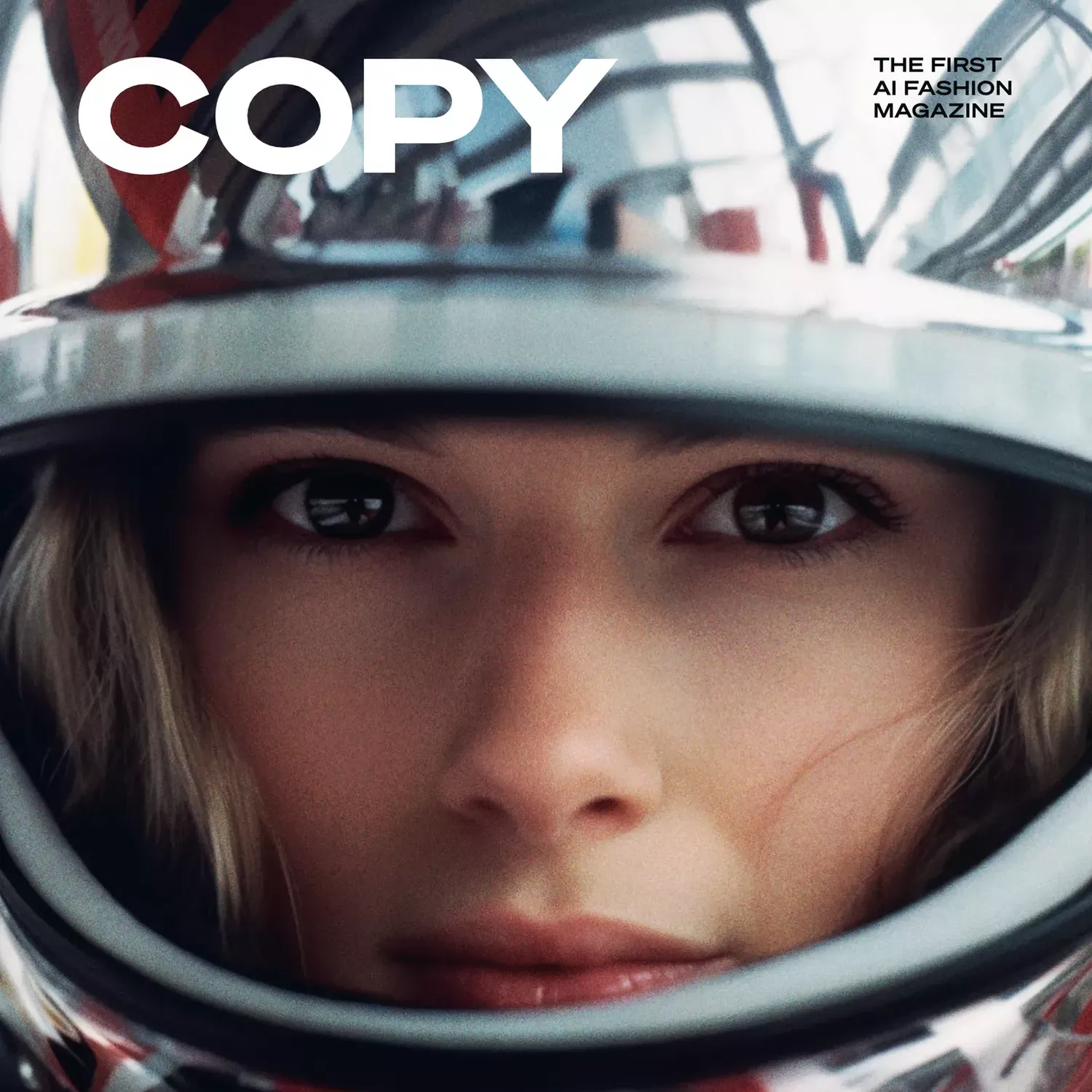It was a Sunday night, quiet in the house, and I sat on the sofa with a hefty issue of Copy—billed as “the world’s first AI-powered fashion magazine” by its creator Carl-Axel Wahlstrӧm. The more I flipped the more unsettled I became. I knew the “models” were composites, but they look like real people; plus they had real sounding names, as did the brands. Had I missed out on something? I was desperate to find a breadcrumb, something that would help me make sense of it all.
“I’m too fabulous to fit in a budget,” a pull quote from a story on young rich Hamptonites, induced a deep eye roll, but another, from a beauty story, “Say goodbye to emotions, wrinkles, and individuality,” made me wonder just what Wahlstrӧm’s objective was. Was I to buy into this world of hyper-perfection where fashion was not just flat and banal, but reduced to stereotypes?

AI-generated image from a fictional Paris fashion show in Copy. Photo: Courtesy of Copy Magazine
That feeling of disorientation was intentional, said Wahlstrӧm on a call from Stockholm, his homebase. A 41-year-old Swede, Wahlstrӧm holds a degree in marketing communication. After entering the workforce, he gravitated towards fashion, launching a magazine called Fashion Tale in 2008 that he published through 2012. I have a back issue that is all fashion illustrations. It seems fair to categorize it as an alt publication, and one that was more interested in ideation than the pursuit of luxury. Much of Wahlstrӧm’s career has been working with fast fashion. Being Swedish, he’s worked with local brands including H&M, & Other Stories, Gant, and Björn Borg. It’s not just a matter of opportunity, but inclination, and something that he’s exploring in Copy as well.
When Wahlstrӧm started playing with AI he wasn’t doing so in order to make a magazine, but that changed in the press of a button. From one day to the next, he explains, the technology improved enough to allow him to prompt imagery that was realistic rather than airbrushed or abstract. “It was love at first sight,” says the creative director. “I saw a lot of red warning flags, but I also felt that I was part of something new and revolutionary. I understood quite early that the technique is still very young and that it has a lot of faults, but I had this urge to just get it out, to be able to say I made the world’s—as far as I know—first AI fashion magazine. I realized that no one would ever sponsor me, I would not be able to get advertisers, so I just decided that I was going to finance it myself, do it myself, and I’m going to try to win over the technology, because the technology wasn’t that good and it’s still not that good. The reason why I think that we have created such a beautiful result is that we have added so much human intellect and knowledge and the craftsmanship into the images.”
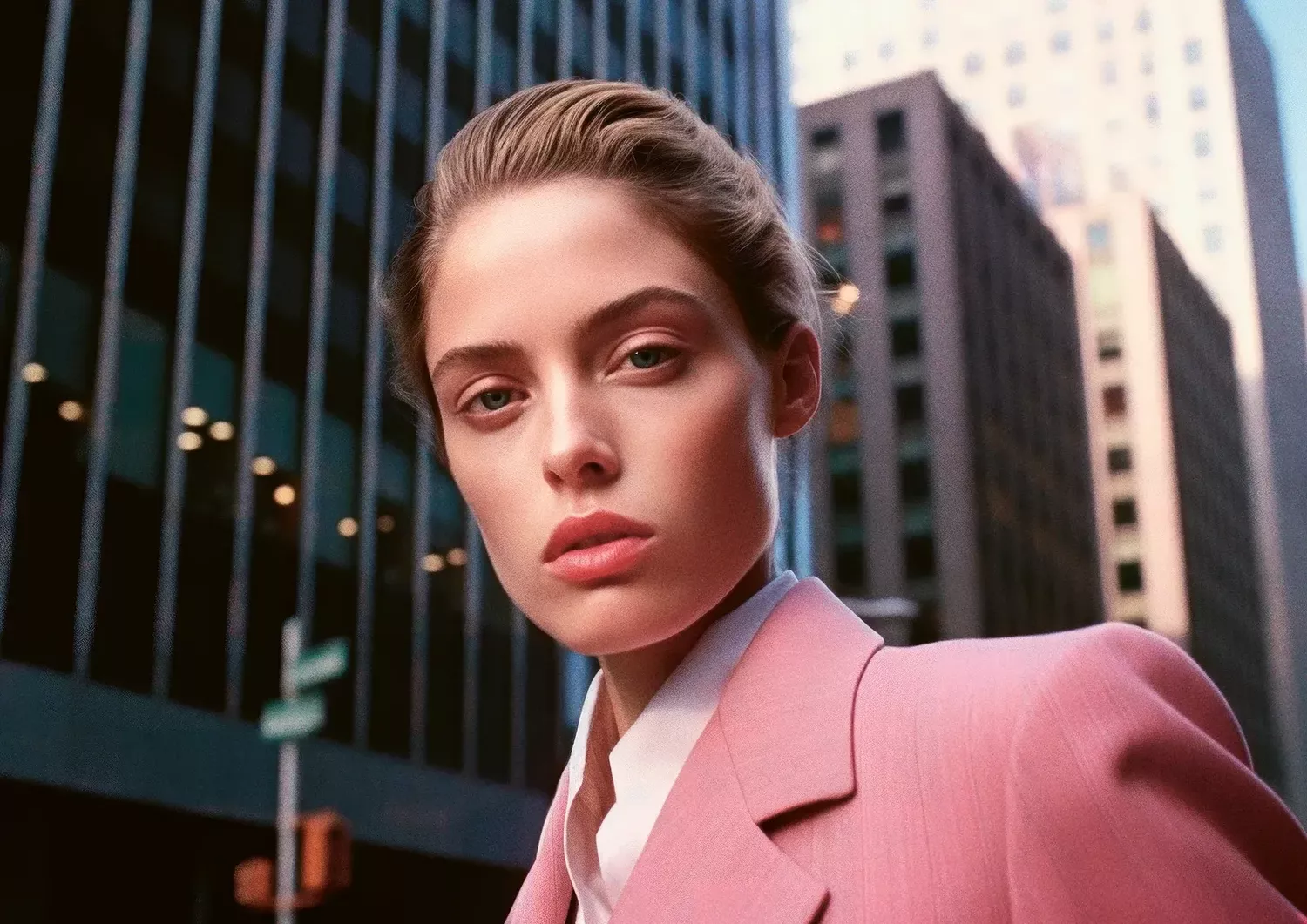
AI-generated image from the “Venture Couture” editorial in Copy. Photo: Courtesy of Copy Magazine. Photo: Courtesy of Copy Magazine
Wahlstrӧm, a team of one, worked with Midjourney and Chat GBT to create images and text that were edited and retouched (by humans). He sees the debut issue of Copy as a document of fashion up to now. He talked me through his process.
It’s difficult to believe the images in Copy are not of real people and places, so maybe we should start with the basics. Just what is an AI image?
An AI image is a visual created with the assistance of computer-generated intelligence. The software utilizes algorithms to create images that closely resemble real photos, yet they are entirely computer-generated. The AI learns from a diverse range of real images to accurately capture realism. [Essentially,] it’s made out of brain; it’s made out of nothing. Creating images in AI really [requires that you] be very inventive with words. Often when I type words that are very clear to me the AI totally misunderstands me because the training models and the metadata that we’re putting into our images gets confused. It’s also interesting because you discover things that you might not have thought about because we are also very limited in our fantasies and ideas of what to create. Many times when the AI misunderstands you, it comes up with something more interesting that what you could have realised. I really think that AI is a very good creative partner in that sense; the misunderstanding often becomes quite funny and interesting.
Can you speak a bit about Midjourney, the program you used to make Copy?
Midjourney’s algorithm is based on images from the Internet. I must say that I’m not an expert of how Midjourney is created, but this gives the program a quite specific style. I can definitely tell if an image is made by Midjourney. There are other apps, like DALL-E, which is based on another type of algorithm, and you also have Adobe and other large companies that want to get into this race of AI generated pictures…they have collaborations with the big stock companies and are scraping their material, so their models are trained on another type of aesthetic. Based on what type of imagery you are looking for, you’re going to use the model that fits best into that style. For me, Midjourney was the perfect fit; I would never have been able to do this magazine on Adobe, for example, because everything would’ve looked like a stock image.
Midjourney has sort of taken all the imagery that we have ever created and uploaded on the Internet and did machine learning on that. So what we are seeing, and what we can create, is what we have sort of fed ourselves—the aesthetic, the imagery, the stereotypes, the norms, everything. This is a summary of that. Midjourney isn’t creating anything by itself; it has been taught upon what we have created. Therefore it is also very hard for Midjourney to create what’s to come because the computer can’t really imagine that—at least not if the results should be realistic, and that’s what I’m aiming for. I was, and am still, very limited to norms and stereotypes, and when I try to sort of push those limits and boundaries, the results just become surreal and fake.
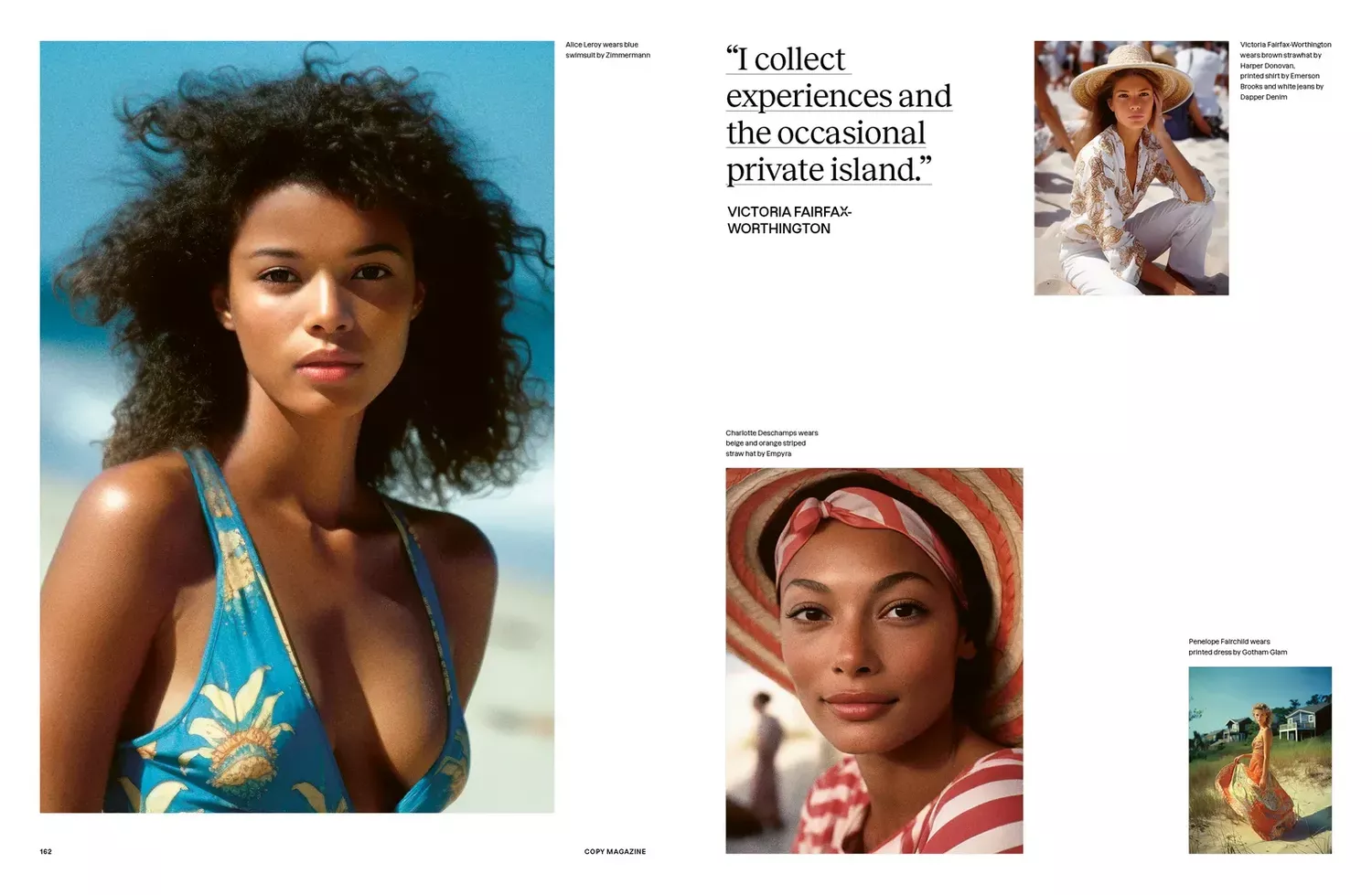
AI-generated image from the “Keeping Up With the Pristine Shores” editorial in Copy. Photo: Courtesy of Copy Magazine
AI technology is very literate. It sees everything either in black or white: Either you are thin or you’re thick; you’re this or you’re that. There is rarely an in-between. Machines are very pragmatic, and the metadata that we are prompting our images with is very summarized, very strong words. I realized quite early that the only realistic images I can actually create here are very stereotyped ones.
I am definitely happy with the result because I think the magazine in itself is a summary of how we have portrayed fashion and style and norms and bodies and shapes during the last 50 years. What’s problematic for me is that I like the end result. I think it’s beautiful, but I definitely see a lot of wrongs and I see a lot of problems and issues. For example, I think the models are way too thin, and I think they’re way too perfect, but that is also very interesting for me. And being in this cross-section between reality and what’s not real makes it a little bit more interesting. You could argue that if I now have the technology to push the boundaries, then I should definitely push them towards the future, maybe more toward healthier stereotypes. But for me, that wasn’t interesting—in this issue at least. I wanted to fool around a little bit and make the reader and the viewer a little bit confused as to what my objectives are. I think that if you look very closely at the magazine and read the captions, there’s a lot of irony and a lot of questioning towards the fashion industry.
I was quite disturbed by how flat everything felt. How could it be that easy to reduce into stereotypes?
I think that we have been confused for the last 10 years—maybe 20 years—ever since I started working with fashion. The only thing that we have achieved is looking back, looking at what we have been doing and then remaking it. I think Midjourney is a perfect example of this. If you prompt the 1990s, it looks like the ’90s. If I prompt 2010, it doesn’t look like anything, it doesn’t know what 2010 represents. To ask Midjourney to make a representation of a fashion collection from fall 2022 in Paris, it doesn’t know what to do because [the offering] is so confused and diverse. We all have a quite clear imagination of what fashion actually was during the ’80s and ’90s.
The bigger the fashion industry has become—the more fast fashion, but also high fashion—everything is just competing against itself. I think the summary of what AI is doing is quite on point in that it sort of reduces it to nothing. And I sort of embraced that [nothingness].
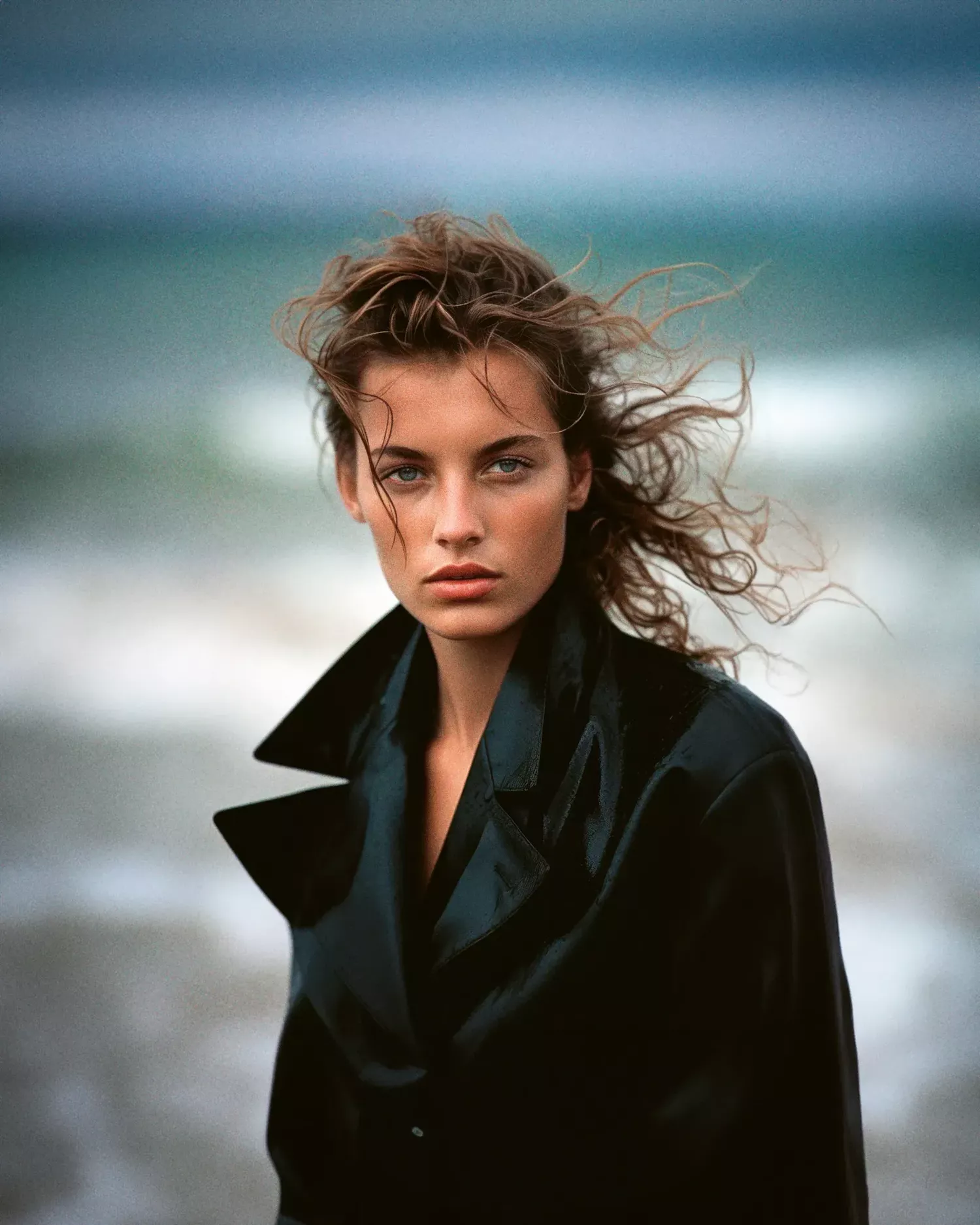
AI-generated image from the “Trendy Ocean Wave” editorial in Copy. Photo: Courtesy of Copy Magazine. Photo: Courtesy of Copy Magazine
I think it’s important for the readers to understand how enmeshed you’ve been in high street fashion and how that might have informed your vision
I feel very comfortable in sort of the highest street fashion world and the aesthetic that comes with it; with the regular customer that just wants to look good. They don’t have that much money to spend, so they need to be creative. They have a huge urge of updating themselves, and I love that customer. They are very interesting to work with because he or she is very predictable, but also very unpredictable, and very nonjudgmental. In the high fashion world, we rarely want to speak about this customer group, and we definitely do not want to enhance them or celebrate them in any way. I think that’s wrong; for me that’s as stylish and inspirational as everything else, and it’s also where I’m coming from, it’s what I know, and it’s what I like in many ways. I think that for too long, fashion has been divided into good and bad, and what’s right and what’s wrong, and what’s up here and what’s down there.
And I think that’s also something that we have been missing when it comes to these types of magazines. I really like the contrast of what I created here, which is a very niche fashion product that is distributed in stores where the other fashion magazines are sort of the opposite of where I am in the fashion triangle, but my imagery and how I sort of presented it is quite similar, so it’s sort of like a mind-fuck here.
Is it fair to say there’s an implicit bias in AI, both in terms of stereotypes and the male gaze? For me, there was a lot of the latter
Early on I realised that I couldn’t erase my white, privileged, male view of women’s bodies and style; that it would be reflected in the magazine and the images. That is also quite interesting for me, because it’s a representation of what I have been taught is beautiful—and I think also what the majority have been taught as beautiful. So should I have pushed the boundaries more for this issue? No, because I really want to be on this thin line between what’s real and what’s not real. And I think that what’s more upsetting is the reality here.
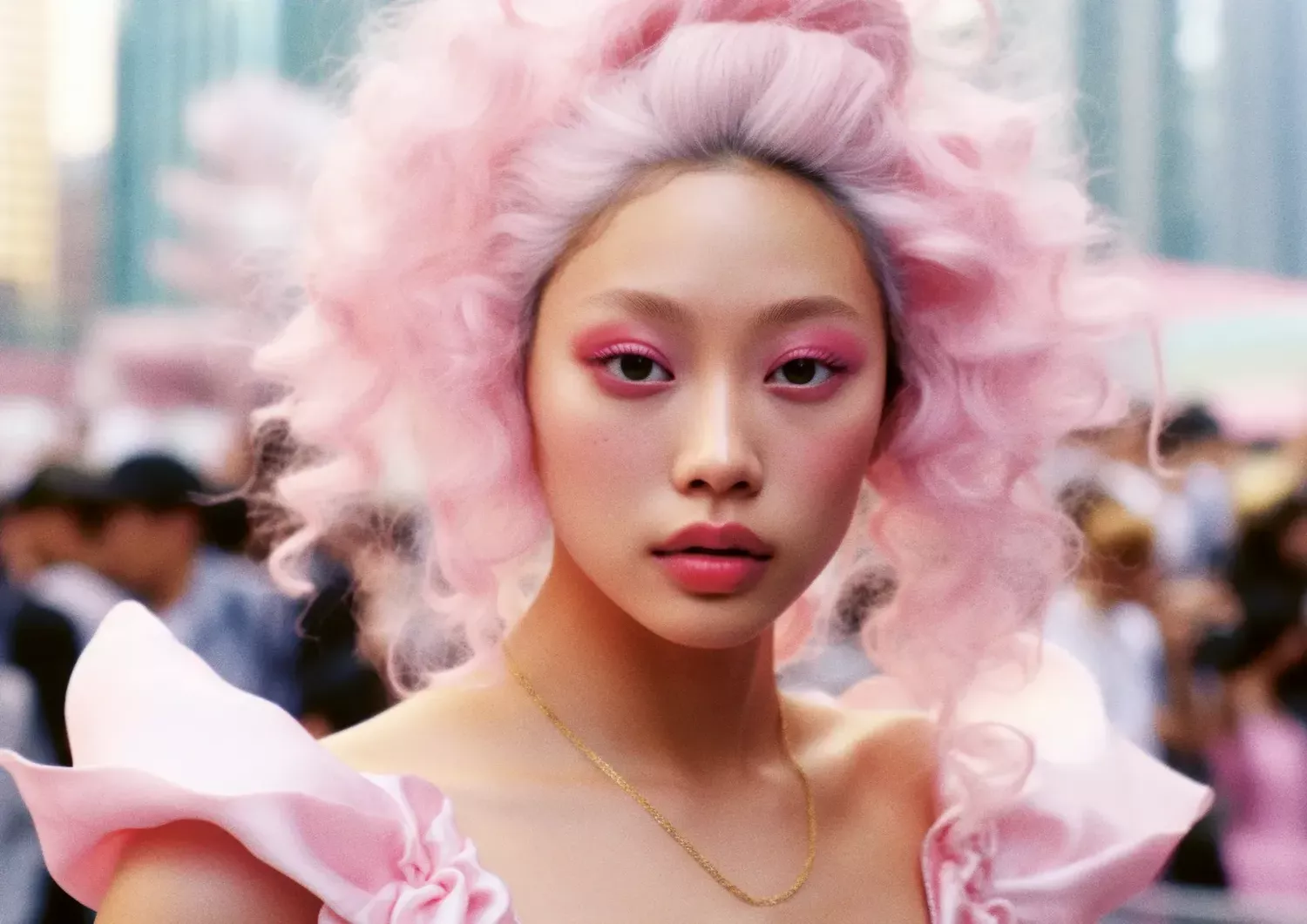
AI-generated image from the “Once Upon a Runway” editorial in Copy. Photo: Courtesy of Copy Magazine. Photo: Courtesy of Copy Magazine
I was definitely ruled and dictated by the AI and the limitations and the software. I also think it’s interesting that I find it beautiful anyhow, because I mean, otherwise I wouldn’t have made it. So something in me that has been fed with this imagery for my entire life also thinks that it is something beautiful in it, even though I see hundreds of problems and hundreds of red flags all over the place. I think the only factor where I actually felt honestly that I could— and that I also have taken the opportunity to—make a change, is the ethnic diversity in the magazine. There are a lot of blonde women, but there are also a lot of other types. There didn’t seem to be as many limitations in the AI there, but when it comes to the styling and the female body and sort of the perfect norm, that was really hard, almost impossible, to try to change because the AI doesn’t know anything else. It knows what it has been taught on, and that is how we have made pictures.
Based on what you have created, it seems that AI equates fashion with a generic idea of glamour
That is the default mode for the AI because, as I’ve said previously, it’s been trained on the mass image bulk, and this is the end result, this is the AI’s conclusion of what fashion is, that it’s glamorous. If you try to prompt a very cool, independent designer, the AI doesn’t know that, the AI knows the broad painting strokes of what fashion is and what it represents.
The RealReal just released a report that indicated people want to “look rich.” It seems to be the same case in your magazine
Almost unconsciously, I have had this urge to make my characters, these AI fictive persons, look quite rich and successful. In many of the stories, people look quite fancy and very respectable in a way. How rich people are living their lives and how they’re dressing themselves has always fascinated people, and it still does.
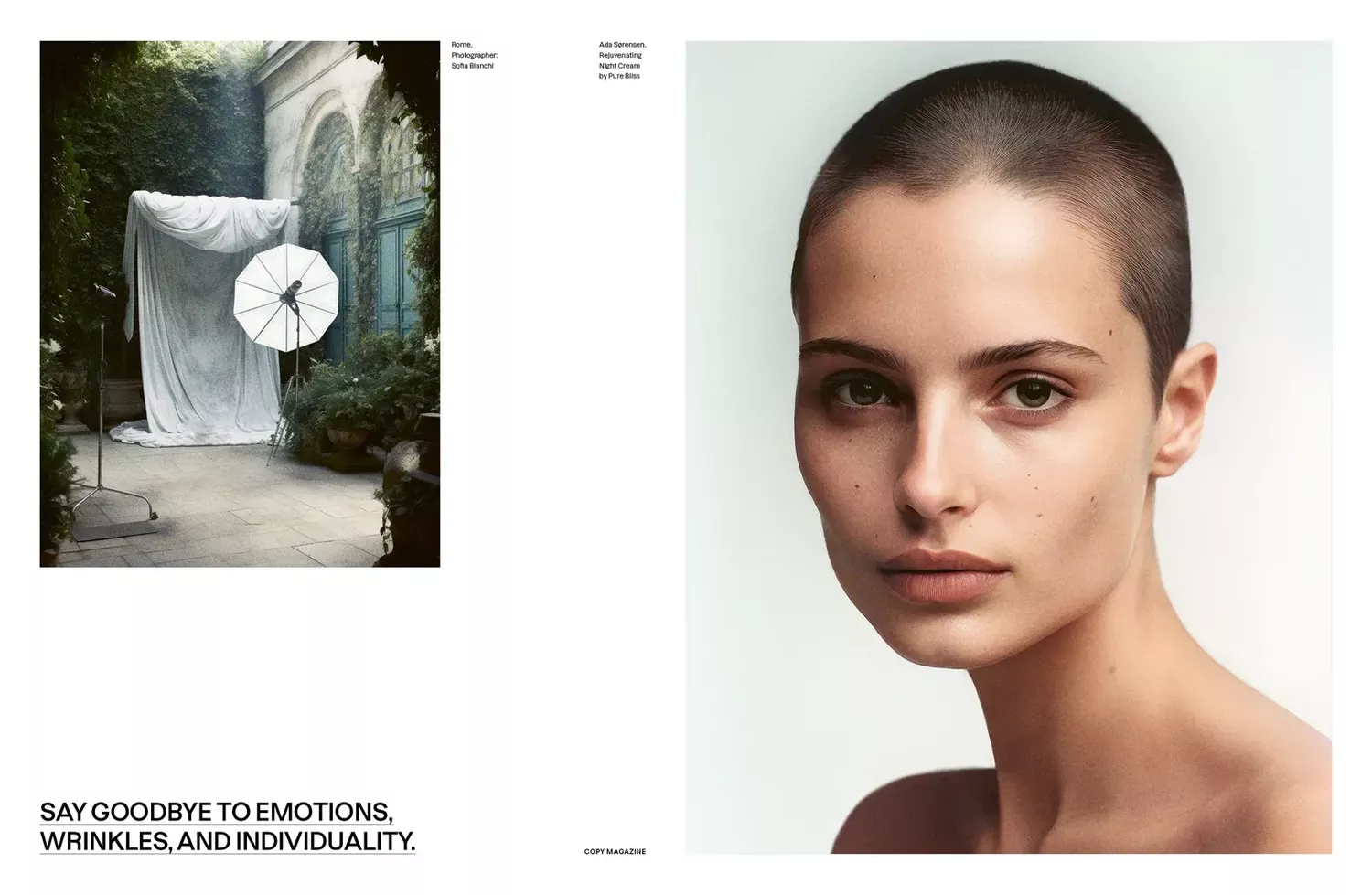
AI-generated image from the “Embrace Superficiality” editorial in Copy. Photo: Courtesy of Copy Magazine
I found reading the magazine very disorienting. It was only when I arrived at the beauty editorial with its ironic take on fashion speak that I started to rethink everything
I definitely agree with you that the skincare, the beauty story, is the most sort of obvious one. When I made those quotes…I was scared of putting them into print because I felt like you can’t criticise the cosmetic industry. What am I doing? I’m writing ironic things, suggesting that you shouldn’t maybe buy makeup—and I’m a male who’s saying this. I was really anxious about putting them into print; but I think that the same sort of tone of voice is represented in all of the stories, only on different levels. For example, in one of the stories which is about very rich women in the Hamptons, I’ve really over-exaggerated their lifestyle and also amplified how money can bring you joy, which everybody knows is not true. I really want to enhance that in a way so you should question it.
Do you think Copy is a kind of cosplay of a high fashion magazine?
It is in a way because I don’t feel like I belong there; I don’t feel like I’m part of the gang; I feel like I’m an outsider trying to do something that should fit in, but I know for sure that it won’t. I know for sure that the people who really know what’s going on—[fashion insiders]—won’t buy into it. They will see that this is sort of like a fake, but I like being in that category. It makes it a little bit more interesting maybe just because of that. I don’t think that anyone is independent; I think that we are all very influenced. For me, the problem with fashion images during the last years has been the narrative. Why is it produced, and by who, and with what purpose? In my opinion, the problem with stereotypes and norms is when large companies make a lot of money on it. This magazine has no interest in making money, it’s more of a discussion. A visual story by an AI and me, a collaboration between human and technology.
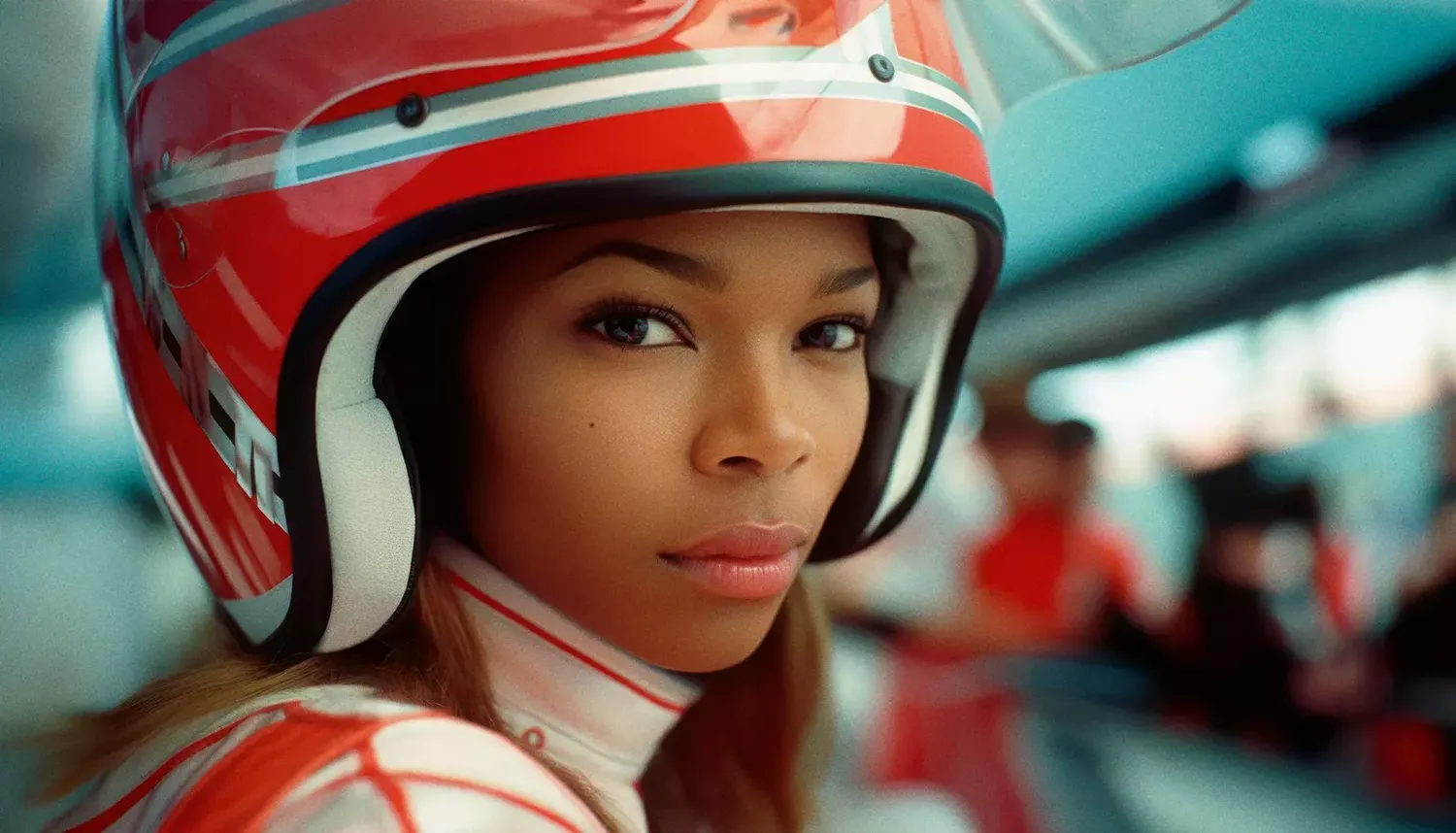
AI-generated image from the F1-themed “Fast Fashion” editorial in Copy. Photo: Courtesy of Copy Magazine
Ego is also a huge part of fashion. Does AI change that dynamic?
My hope and my dream is that in the near future AI will reshape the structures and the hierarchy in such a way that it will be very obvious and very clear who actually is the most creative person in the room. AI gives you the opportunity to create something that you couldn’t have created yourself before. Now anybody with the right mindset, the knowledge, and maybe also the aesthetic, can actually make a fashion magazine, and a little bit of money. That wasn’t the case just a half a year ago. The hierarchy, especially in fashion and marketing, is so solid you can’t get through. It’s never about the best idea, it’s only about other things: politics, capitalism, networks. Hopefully AI can be the messenger here and break the barriers.
What comes after postmodernism, in your opinion?
That’s a million dollar question. AI references what we have done and not where we want to go—at least not if you want to have a realistic end result. I think that AI might be the solution. Sometimes we as humans—and the fashion, marketing, and communications industries—are suffocating ourselves because we don’t dare to explore new trends because we are so limited by commercial interests and so on. Even the independent actors out there want to please everybody because that’s the only possible business model. For something new to emerge that will reach a really large audience, maybe AI could be a way forward because as I said previously, AI doesn’t care. The AI doesn’t say what’s right and what’s wrong.
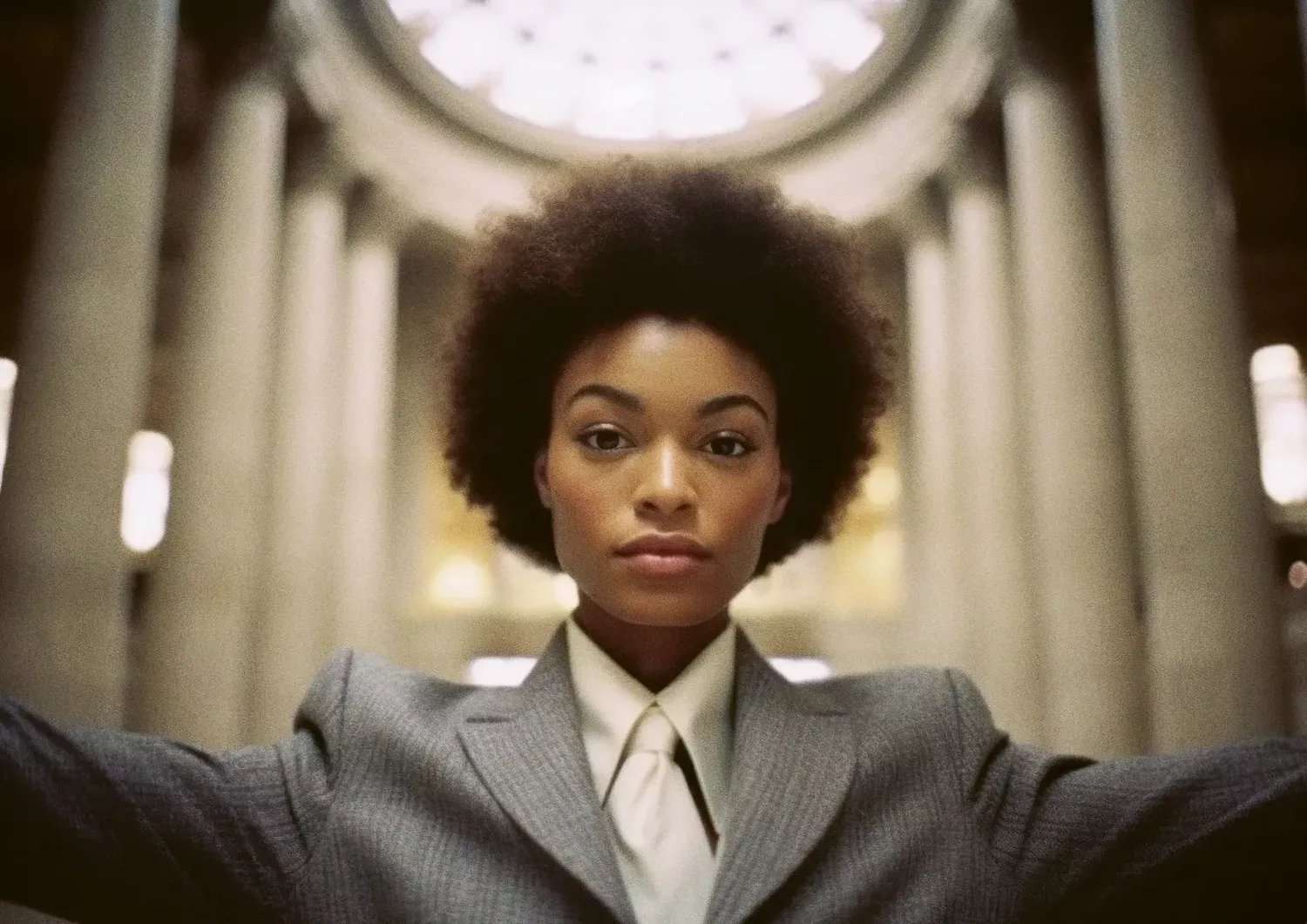
AI-generated image from the “Venture Couture” editorial in Copy. Photo: Courtesy of Copy Magazine
What I think this magazine shows a little bit is that we need to close this chapter of endless repetition. I don’t think that even I had realized how much remake everything just is. It’s just looping, which I discovered when I actually started prompting the AI. I was mindblown to realize that I couldn’t capture the present time, I couldn’t capture fashion. I tried to prompt new designers, I tried to prompt art movements and aesthetics that I think are sort of pushing the boundaries. Because I think sports fashion looks a little bit more futuristic and contemporary I tried to prompt the AI with that, but when it tried to recreate a cool sports brand, it just looked like ’90 sports.
I do think that we can train the AI into it, and I think we actually will do that. But first we need to come to the conclusion that we need to stop repeating ourselves and look forward. The reason why we have [been looping] since the beginning of 2000s—because this wasn’t the case when I started getting fascinated by marketing and images in the 1990s—relates I think to when the Internet arrived. With Pinterest and image search and blogs and social media—we got stuck in a way. Everyone is doing mood boards, going to a client and presenting a campaign, it’s just like more of something that’s already been done, which is super boring of course.
What’s next?
There’s no going back. That was my thought on the day the photorealistic Midjourney version arrived. I definitely believe that cameras will be around forever, but this is a huge technological step forward. The sooner we try to take control of it, and understand it, and try to shape it and work with it in a way that is positive going forward, I think it will be an amazing tool.
This interview has been edited and condensed for clarity. Originally published on Vogue US.
